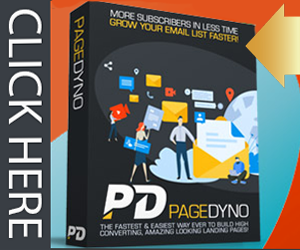‘Is Your Promotion Dressed for Success?’ by Paul Maxey
Paul Maxey’s latest ‘Total Package’ article is titled “Is Your Promotion Dressed for Success?”. [Copywriting Article]
Paul Maxey’s latest ‘Total Package’ article:
Is Your Promotion Dressed for Success?
Dear Business-Builder,
It’s all about probability.
With every action you take as a direct response marketer, your ultimate goal is to increase the probability of making the sale. Creating a better product … selecting a better list … writing a better promotion; all of these things will increase your chances of success.
But one piece of the puzzle that’s very often overlooked ““ and not given the full consideration it deserves ““ is the format of your promotion.
Direct response promotions have come a long way since the days of the #10 envelope and the 8-page sales letter, where your principle decision was whether your outer envelope would have a window or not.
These days, you have your choice of a veritable cornucopia of other formats: The self-mailer … the 6″ x 9″ carrier envelope … the 8½” x 11″ magalog … the 10″ x 13″ tabloid … the 5½” x 8½” bookalog … the slim jim … the reportalog (or special report) … and pretty much anything else you can slap a mailing label on.
And let’s not forget online marketing via e-mails … landing pages … and even the more traditional, multi-page web site.
So what’s the answer to the format question?
There are two primary schools of thought:
First, many marketer’s choose their format at the outset of the planning process before a single word of copy is written.
They believe the format you choose is going to heavily impact the overall strategy, as well as the writing process itself (for example, a magalog or bookalog requires much more copy than an 8-12 page sales letter).
Therefore, the more clear you are from the start about the format you’re going to be using, the better you’ll be able to adapt and adjust your writing process accordingly.
Second, many believe that the only way to “choose” a format is to let the message itself dictate the format.
They believe making this decision at the outset of the planning process is a colossal blunder that forces you into making choices you shouldn’t be making until the copy begins to take shape.
Instead of asking “what format?” at the start, they instead wait until much of the copy has been written and then ask …
What’s the most appropriate format for this product, this message and this market?
What look and feel fits best with my approach and my prospects’ feelings towards the subject at hand?
What can I do with my promotion’s appearance in order to present my copy with the greatest impact, credibility and readability?
If the tone, look and feel of your promotion is unsuitable for the subject matter at hand ““ and your prospect’s attitudes toward it ““ your copy might as well be written in Greek.
But if the tone, look and feel of your promotion is suitable for the subject matter and your prospect’s attitudes, your copy will carry with it far greater impact and credibility.
A glowing example …
For this week’s Swipe of the Week, you’ll find a great example of how formatting can make or break your promotion.
When you first set eyes on this 8½” x 11″ special report from The Oxford Club, it instantly projects the image of an official document requiring your immediate and undivided attention.
By the time the average person realizes this is really just another promotion, they’re already thoroughly engaged in the copy and eager to find out how to collect their first check.
Go ahead and download it here now ““ and then tell us below: How do you personally handle the format question?
Until next time …
Yours for greater profits,
Paul Maxey
Makepeace-Trained Copywriter
Supplement to THE TOTAL PACKAGE
Attribution Statement: This article was first published in The Total Package. To sign-up to receive your own FREE subscription to The Total Package and claim four FREE money making e-books go to www.makepeacetotalpackage.com.
The Total Package
*IMNewsWatch would like to thank Clayton Makepeace for granting permission to reprint this article.
Comments are closed.




